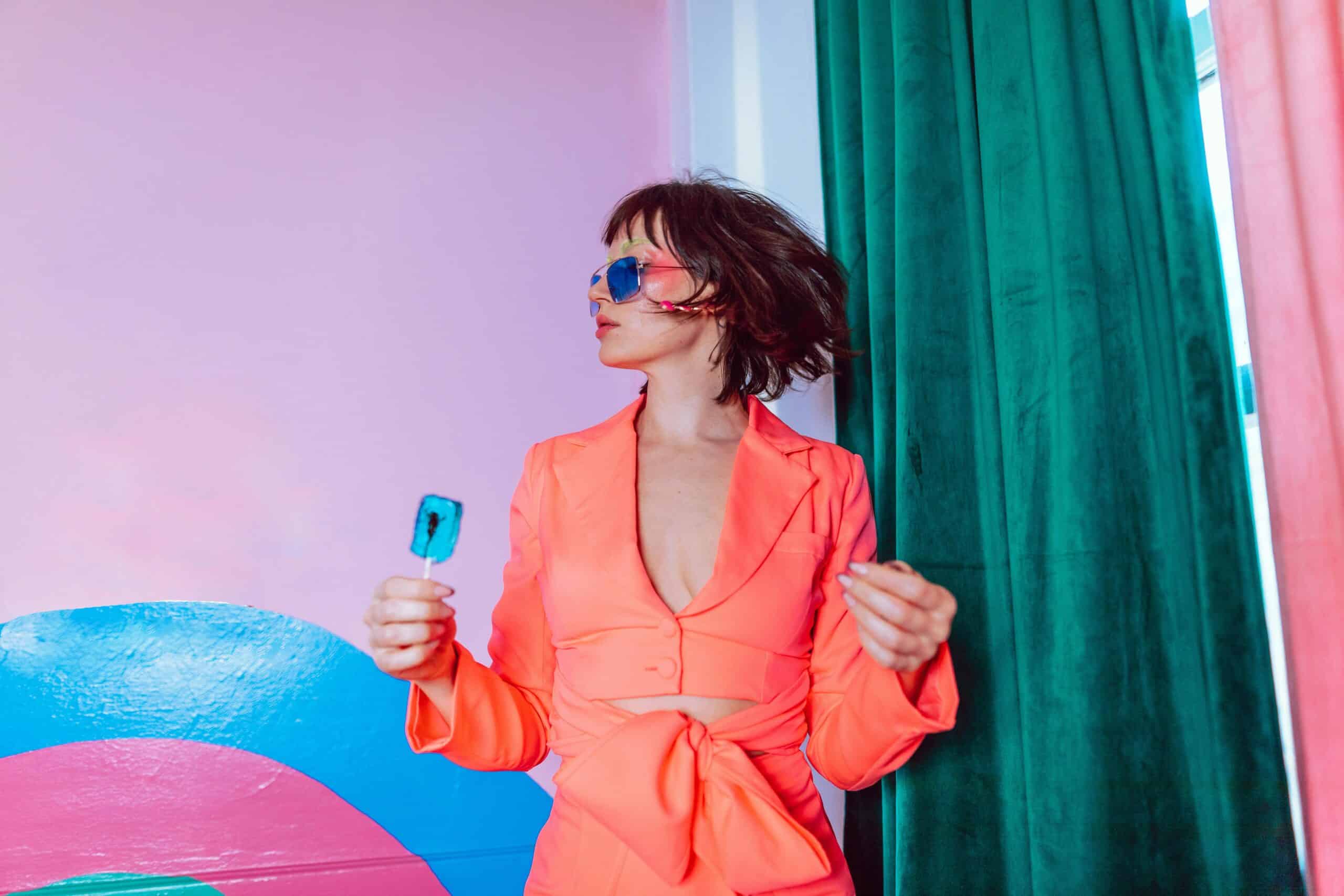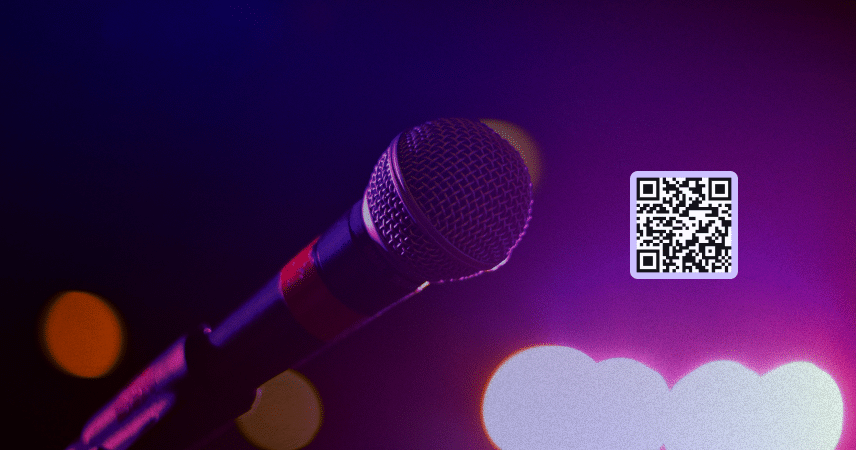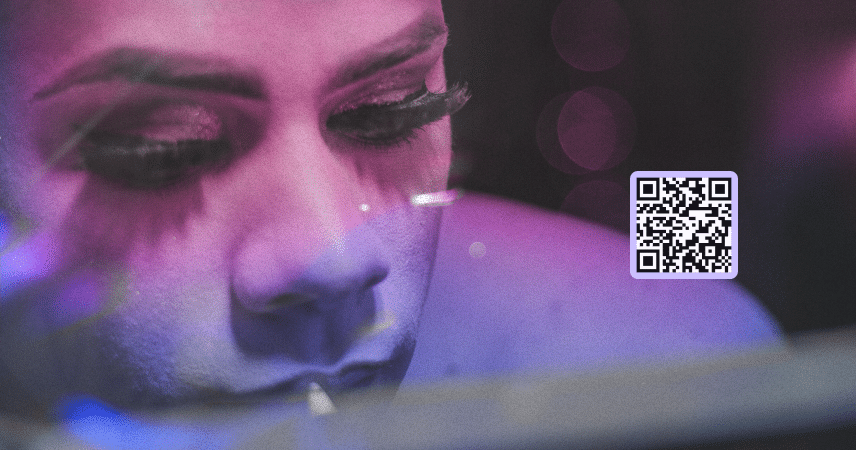
Drag is a hot topic today, but this art form has been around for centuries in one form or another. So, what is drag, and why does it seem to be on everybody’s radar today? Drag is a kind of performance art in which drag queens create elaborate personas that emulate various aspects of femininity in theatrical ways. That’s a very basic definition – we’ll take a deeper dive below.
Why is the drag community suddenly getting so much attention? On one hand, there is positive attention as drag is becoming more accepted as a form of artistic expression, and shows like Rupaul’s Drag Race have taken drag culture into the mainstream. On the other, drag queens are being demonized by a political faction that thrives on sowing hate and fear.
So let’s get into it! Let’s talk about this phenomenon called drag. We’ll get into the history of drag, the different kinds of drag performers, and how drag intersects with gender identity.
The History of Drag
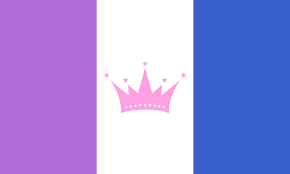
Drag is an art form that brings together performance, fashion, and identity. It has evolved into a movement that is cultural, artistic, and yes, political. At its most traditional, men dress in (traditionally) women’s clothing and adopt exaggerated personas as a way to challenge social norms. A less preferred term for these performers is female impersonators.
Today, the majority of drag performances are cisgender men taking on female roles. However, people are disrupting this. There are drag queens who are cisgender women, trans women, and cisgender men too. Additionally, some drag performers are adopting male personas. As this art evolves we continue to see a variety of gender identities and expressions.
Historically, drag can be traced back to ancient Greece. There, men performed in both male and female roles in theater productions. It was these early female impersonators who laid the groundwork for this art form.
Drag as we know it today really began to flourish in the late nineteenth and twentieth centuries – particularly in gay bars and night clubs. Here, gay men and cross dressing performers could express themselves and be part of a community, without fear of persecution. This continued to be the cast after the second World War. Homosexual acts were still illegal, and gay men could be targeted in public for cross dressing.
In places like New York City, these performances became wildly popular. People were drawn to drag queens who became known for their cutting wit, raunchy jokes, and captivating stage presence.
By the 1960s, the drag scene in San Francisco and New York City had become quite prominent. Drag balls were created. At first they were intimate gatherings, but later they grew into large competitions where drag performers would showcase their talents. These events were often held in gay bars which further created a sense of belonging within the LGBTQ community.
These drag balls led to the rise of drag families. Within each drag family a drag mother would mentor younger drag queens which created a deeper sense of unity and support.
Moving into the 1980s and 1990s, drag culture began to gain mainstream visibility. Drag acts were featured in popular mainstream entertainment. One of the most notable examples of this is when Divine played Edna Turnblad in director John Waters’ groundbreaking film, Hairspray. The famed Divine earned crossover success into the mainstream that made her a household name. Her work and success carved a path for drag performers to follow and challenged traditional notions on gender roles.
By the end of the 20th century, there was a clear shift in the way drag was viewed by mainstream society. The queer community became more vocal and visible. Positive representation gradually bled into popular culture, and people began to take a more positive view of both drag queens and queer culture.
This continued into the 21st century. In 2009, RuPaul’s Drag Race debuted. The wildly popular show has been enjoyed since by people within and outside of the LGBTQIA+ community. Hosted by drag legend RuPaul, an openly gay man, Drag Race features drag queens competing in challenges relating to fashion, performance, and wit. Since it premiered, Drag Race has launched many drag queens into mainstream success, brought the art of drag into homes all over the world, and made a permanent impact on drag culture.
Today, the art of drag is thriving despite facing social and political challenges. Drag shows, drag cabarets, and drag brunches have become staples in gay bars and nightclubs. Children are entertained, delighted, and educated through Drag queen story hours in libraries and book stores. Many drag queens have achieved global fame as more people have come to appreciate this art form.
Not only are drag queens performing for entertainment, but they are using their drag personas for the greater good. Many have emerged as advocates for queer rights, acceptance, and empowerment. The drag community is now a key part of gay culture and the larger queer community.
From it’s beginning of male actors taking on female parts in Greek theater to drag queens like Maebe A. Girl winning public office, drag’s history is full of examples of creativity, resilience, and activism. Drag performances show just how drag has played a role in challenging societal expectations by pushing the boundaries of art and giving marginalized communities a voice.
Who And What Are Drag Queens?
Drag queens like those featured in Rupaul’s Drag Race were once limited to gay men who created and portrayed female characters. Now, drag performances feature people of many genders and sexual orientations. So, what makes a drag queen? It’s a combination of character development, hair and makeup, costume design, and performance.
Aesthetics And Performance Styles Seen in Drag Performances
Aesthetics is key. Many drag performers adopt a look and performance style that becomes a part of their signature drag persona.
Camp Queen
A camp queen incorporates bright caricature-like makeup and costumes with over-the-top performances. They tend to focus on humor, parody, and a playfully exaggerated approach to feminitiy. Camp queens often break the fourth wall and incorporate outlandish elements into their personas.
Fish Queen
In drag and female impersonation, the word fish is used to describe someone who “passes”. For example, if you tell a queen she looks “fish”, you are saying that the average person would believe she was a woman. Fish queens aim for glamorous, highly feminine, realistic looks. When they are successful, they resemble cisgneder women. While many drag queens achieve fish status through artful use of makeup and hairstyling, others leverage naturally feminine features.
Comedy Queen
Comedy queens build their performances around humor. These drag queens use satires, puns, a witty observation s to make audiences laugh. While other performers tend to focus on costumes, makeup, and other elements comedy queens are about delivering laughs.
Fashion Queen
Fashion queens bring the finest drag fashion to drag shows. They showcase couture, high fashion, and avant garde looks. Many of these queens push boundaries by bringing innovative and artistic looks to the drag stage.
Fierce Queen
Fierce queens bring fierce, take-no-prisoners attitude and energy to the stage. They are known for their confidence and bold demeanor. They have a performance style that is intense, sometimes even confrontational.
Pageant Queen
These drag performers compete in beauty pageant. They emphasize, refinement, elegance, and polished looks. Pageant drag focuses on flawless makeup, elegant gowns, and poised stage presence.
Alternative Queen
This version of drag embraces looks that are unconventional and outside of the mainstream. Many of these queens use elements from horror, goth, and other subcultures to create their drag personas. They often challenge beauty norms by featuring edgy, eccentric styles.
Burlesque Queen
Drag shows featuring burlesque queens combine drag with sensual and playful acts that harken back to burlesque shows. Think elaborate choreography, costume reveals, and a bit of titillation. It’s glamour mixed baudiness.
Political Queens
Drag may have begun in the theaters of ancient Greece, but it has evolved into an act of resistance. political queens incorporate social commentary, activism, and advocacy into their drag shows. These queens promote queer rights, challenge social norms, fight for racial equality, and otherwise advocate for marginalized groups.
Boy Queens
This type of queen includes masculine and feminine elements into their stage personas. They mix gender expressions or develop characters that are more androgynous. They blur the lines of traditional female and male presentation at drag shows.
Notable Drag Queens in History
Some seasoned queens have had such successful careers that they are well-known outside of the drag community.
RuPaul
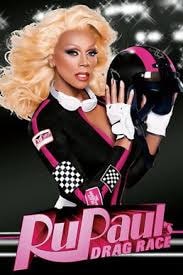
RuPaul is arguably the most well-known drag queen. RuPaul is also a recording star, author, and TV host best known for RuPaul’s drag race – show that brought drag culture into the mainstream. This icon has championed for LGBTQIA+ representation and been a powerful influence in the areas of music, fashion, and advocacy.
Divine
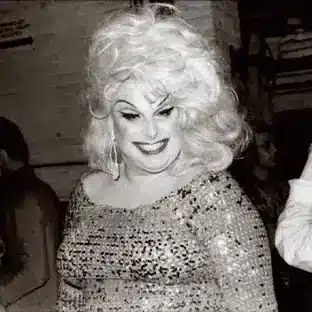
Divine was a legendary drag queen, singer, and actor who mad a lasting impact through roles in John Waters’ movies Hairspray and Pink Flamingos. Divine was also a trailblazer in the underground queer scene – challenging norms and merging drag, punk, and queer representation.
Trixie Mattel
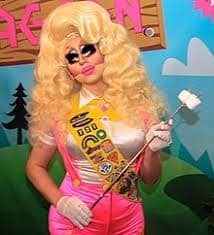
Trixie Mattel has emerged as one of the most well-known queens to emerge from Drag Race. She is a comedian, singer, and entrepreneur with a look that was inspired by Barbie. This, combined with her infectious sense of humor has made her a fan favorite. Trixie has expanded her career to include releasing music, promoting her cosmetics line, and building a media empire of her own.
Alaska 5000

Alaska 5000 is a drag queen, performer, and singer who brings a unique sense of humor to her alien-inspired look. She has toured globally, recorded several albums, and become a top influencer in modern drag culture.
Shangela
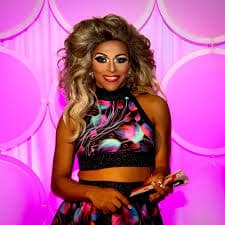
Shangela is a multi-talented drag artist, singer, and actor. She rose to fame on Drag Race in seasons 2 and 3. Shangela also appeared in All Stars 3. She gives her all to her high energy performances, and has made an impact in mainstream media appearing in both Dancing With The Stars and A Star is Born.
Sasha Colby
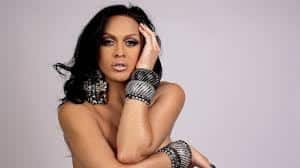
Sasha Colby is a deeply respected drag queen, trans advocate, and winner of Drag Race Season 15. She’s also the drag mother of emerging pop sensation, Chappell Roan. Colby is known for her transcendent performances and stage presence. It’s clear that her pageant background has given her talent a strong foundation. Sasha uses her talent and voice in support of trans visibility.
Chappell Roan

Chappell Roan has affirmed on multiple occasions that Chappell is a drag character she has created. She makes use of theatrical costumes, campy aesthetics, and bold makeup to deliver drag-inspired performances to her audiences. This along with her stunning singing voice, unapologetically queer songwriting, and energetic stage presence has earned her a devoted LGBTQIA+ following. The straights like her too. She has also stated that her artistic choices are driven by a desire to honor her inner child.
Drag Kings
At one point, many people believed that only men could do drag. Now, drag shows are open to a variety of performers. This includes drag kings. Traditionally, a drag queen was a woman who adopted an exaggerated male persona.
Drag kings also embrace many different personas such as:
- Cowboys
- Suit And Tie Gentlemen
- Bad Boys/Rebels
- Tycoon
- Jock
- Macho
Kings have encountered an array of challenges in expressing themselves through art. There is some resistance from traditionalists in the community who don’t see this as a legitimate style of drag. Additionally, there is a lack of representation. For example, kings may not be able to easily find places to perform or be welcomed in spaces where drag queens are. Finally, drag kings often subvert traditional norms around masculinity which can cause offense and backlash.
Drag as Art And Beyond
Drag is art, performance, and community. Its also activism. A drag show is more than just a place where cross dressing happens. It’s an experience.
The Transformation Process
The art of drag is all about transformation. This happens when drag performers who include gay men, heterosexual men, lesbians, straight women, trans folks, and more use makeup, wigs, and costumes to create dramatic changes in their appearance. The end result may be glamorous, grotesque, or exaggerated. Drag as creates looks that are feminine, masculine, or something in between.
These looks are achieved after months of practicing and perfecting looks – sometimes years. Drag queens use color and contouring to accentuate their cheekbones, create dramatic jawlines, and feminized their faces with eye makeup and lipstick.
Wigs are also a key element. Queens invest in wigs to help create their personas. Some even make their own. The right wig with the right style can be the cherry on top to a fully glamorous look or something entirely camp.
Then there are the costumes. Again, the looks vary widely based on the desired outcomes. Drag queens and kings choose outfits that express glamour, humor, edginess, and creativity. These costumes may come from expensive designer boutiques, thrift stores, or be the result of hours sitting in front of a sewing machine. They are often decorated with and accessorized with jewels, feathers, and other notions.
All of these elements are more than the sum of their parts. They are important to the transformation process that queens go through to transition from their daily personas to their drag characters. Keep in mind that for every extraordinarily successful queen performing in front of thousands in New York or San Francisco, there are hundreds of others practicing their looks across the globe. Many of them hoping to be the first person in their city to make it big.
Performance – Lip-Syncing Comedy Dance & Singing
Drag is also performance and competition. Queens engage in comedy, live singing, dance, and lip-syncing. Drag queens and kings combine all of these elements to showcase their talents, and sometimes compete with one another.
Drag has turned lip-syncing into a sophisticated performance art. Queens and kings work hard to develop their techniques and turn this talent into something spellbinding with exaggerated facial movements, gestures, and complex choreography. Then again, some performers bring their real voices to the stage with live performances. One standout example of this is Jinkx Monsoon. She is a classically trained vocalist who has an impressive recording career, and has even performed at Carnegie Hall.
Dance is also an important part of the art of drag. Queens develop unique dance styles to reflect their talents and bring their characters to life. At a drag show, audiences may witness ballroom dancing, hip hop, and other stylings – whatever fits the performers persona and communicates their intended message.
The Role of Drag Houses and Families
The concept of houses create a sense of safety and community. They are a vital part of drag. For a queen, being invited into a drag family is confirmation that others see their talent, potential, and humanity. Imagine being an emerging queen in a big city like New York or San Francisco without a support system. These found communities can be lifesavers.
In each house, a drag mother is the matriarch. She guides new performers teaching them about drag, and helping them hone their craft. Think about a traditional family unit combined with a creative training ground.
Drag Balls
Drag balls are competitions where performers compete in categories like voguing. They were made popular by houses in New York City’s ballroom scene.
Drag Queen Story Hour
Despite what some politicians and talking heads say, drag isn’t inherently sexual. It can be. Drag can also be fun, whimsical, and silly. Many queens give back to the community by taking part in drag queen story hours where they read stories and engage with children. In return, those children are entertained, educated, and learn important lessons about acceptance, community, and creativity.
Drag And Activism
Drag artists are activists. Some engage in activism openly. They advocate for the rights of the queer community. They defy threats from politicians, ignorant and misinformed citizens, and even terrorist groups like the proud boys. Even those who simply transform themselves for the purposes of creative expression and creativity are engaging in acts of protest.
Myths And Misconceptions About Drag
There are a lot of myths about drag. Some of these are relatively harmless. Other myths are both wrong and dangerous.
Only Men Can do Drag
Anyone can be a drag artist – man, woman, or enby. Drag queens don’t have to create characters of the opposite sex either!
Drag Queens Are Gay or Transgender
Drag is not gendered. It is not associated with any sexuality either. Yes, some drag performers are trans and many are gay. Neither of these things are a prequisite.
Drag And Cross Dressing Are The Same
Cross dressing is simply dressing in clothing that you associate with the opposite sex or gender. That is often a part of drag, but not always. People also cross dress because it’s a personal preference or they like the aesthetics of it.
Drag is Appropriate or Inappropriate For Kids
Drag is a performance. Think of it like going to see a play, a comedy show, or a movie. Sometimes, these things are entirely appropriate for all audiences. Sometimes, they are 100% for adults only.
Drag Queens Are Bitchy
Drag queens curate characters that may be bitchy, sarcastic, funny, etc. Just like drag characters possess a range of personality types, so do the people behind them.
Drag Mocks Women
Some claim that drag exists to mock or belittle women and femininity. In reality drag pays homage to women while often punching up at the unfair expectations society creates for thenm.
Drag is Here to Stay
Drag isn’t going anywhere. It’s a form of art and expression that is theatrical, intelligent, and political. Drag has a long history of survival, advocacy, and strength. Queens and kings will continue to be themselves and bring their art to audiences who remain loyal to them.


